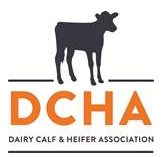
Go to the source of calf diarrhea to stop it
 Pinpointing and correcting the underlying cause of a diarrhea outbreak in calves is necessary for keeping other calves healthy.
Pinpointing and correcting the underlying cause of a diarrhea outbreak in calves is necessary for keeping other calves healthy."An important aspect of breaking the cycle of disease is to identify key factors where intervention could prevent future cases," says Patricia Blanchard, veterinarian and associate director of the California Animal Health and Food Safety Laboratory in Davis, Calif.
Look for patterns in calves that become sick to help you identify where intervention is needed. In a recent issue of the California Dairy Newsletter, Blanchard identifies some common, yet sometimes overlooked situations that can keep the cycle of diarrhea going:
- Late-night calving pens. If affected calves are usually born in the evening this might signal a delay in colostrum feeding or a delay in moving calves to a clean, dry area to reduce their exposure to scours organisms.
- First-calf heifers. If affected calves are usually the offspring of first-calf heifers and these calves only receive colostrum from their dam, it could indicate the heifers are not receiving the same dry-cow vaccines (rotavirus, coronavirus and K99 E. coli) as mature cows. In general, colostrum from first-calf heifers may have fewer antibodies than colostrum from mature cows due to less exposure to diarrhea-causing organisms.
- Sharing the ride. If carts, trucks or other transport devices that are used to move newborn calves to hutches or pens are also used to handle dead calves this exposes newborns to high levels of organisms that killed other calves.
- Nutritional issues. The source of milk, treatment (pasteurized or not), and type (replacer, whole, etc.) may be factors contributing to diarrhea.
Blanchard says to submit a fecal sample for testing from a calf that has had diarrhea for 1 to 3 days and has not been treated with antibiotics, as these can suppress the ability to grow certain bacteria in culture.
12.11.2013